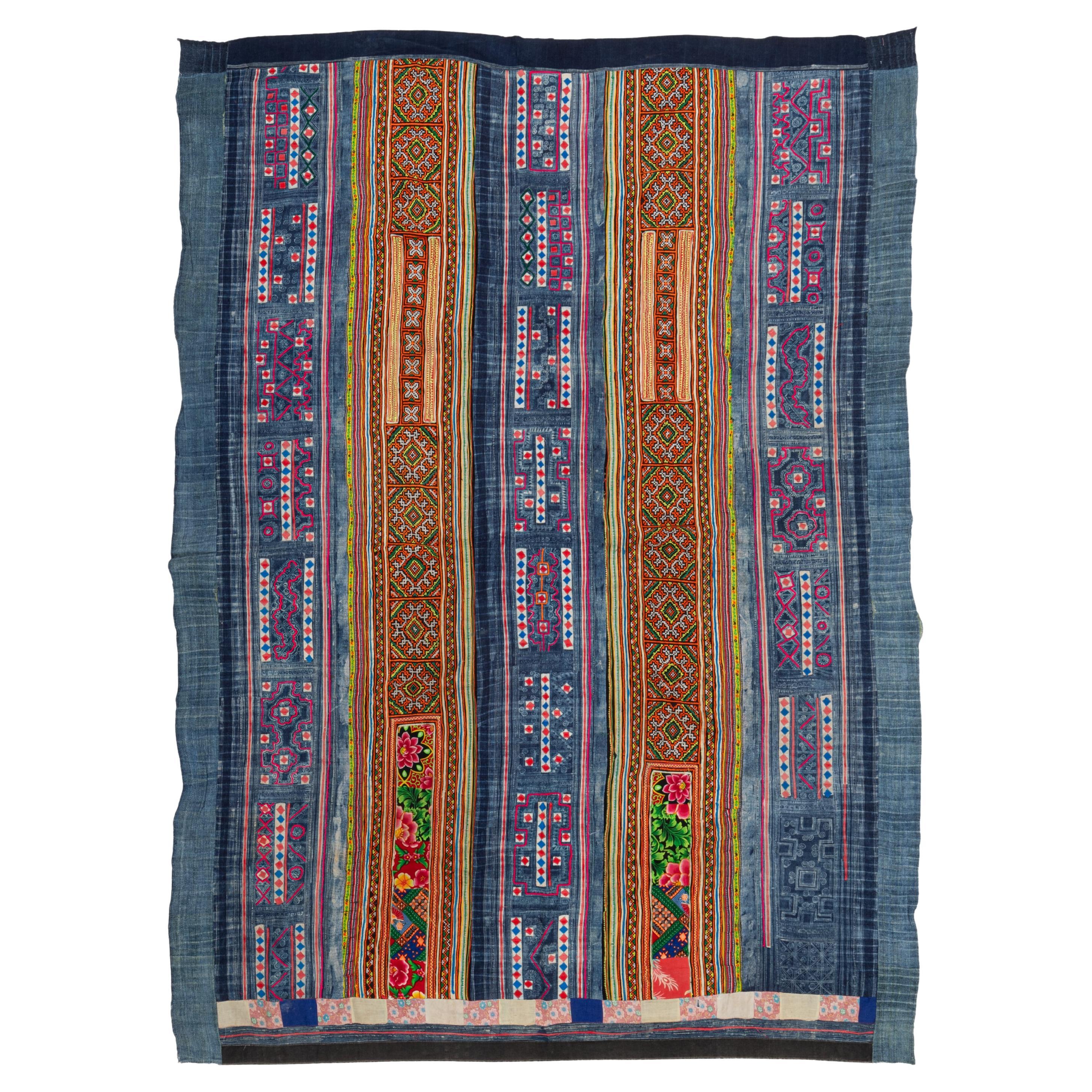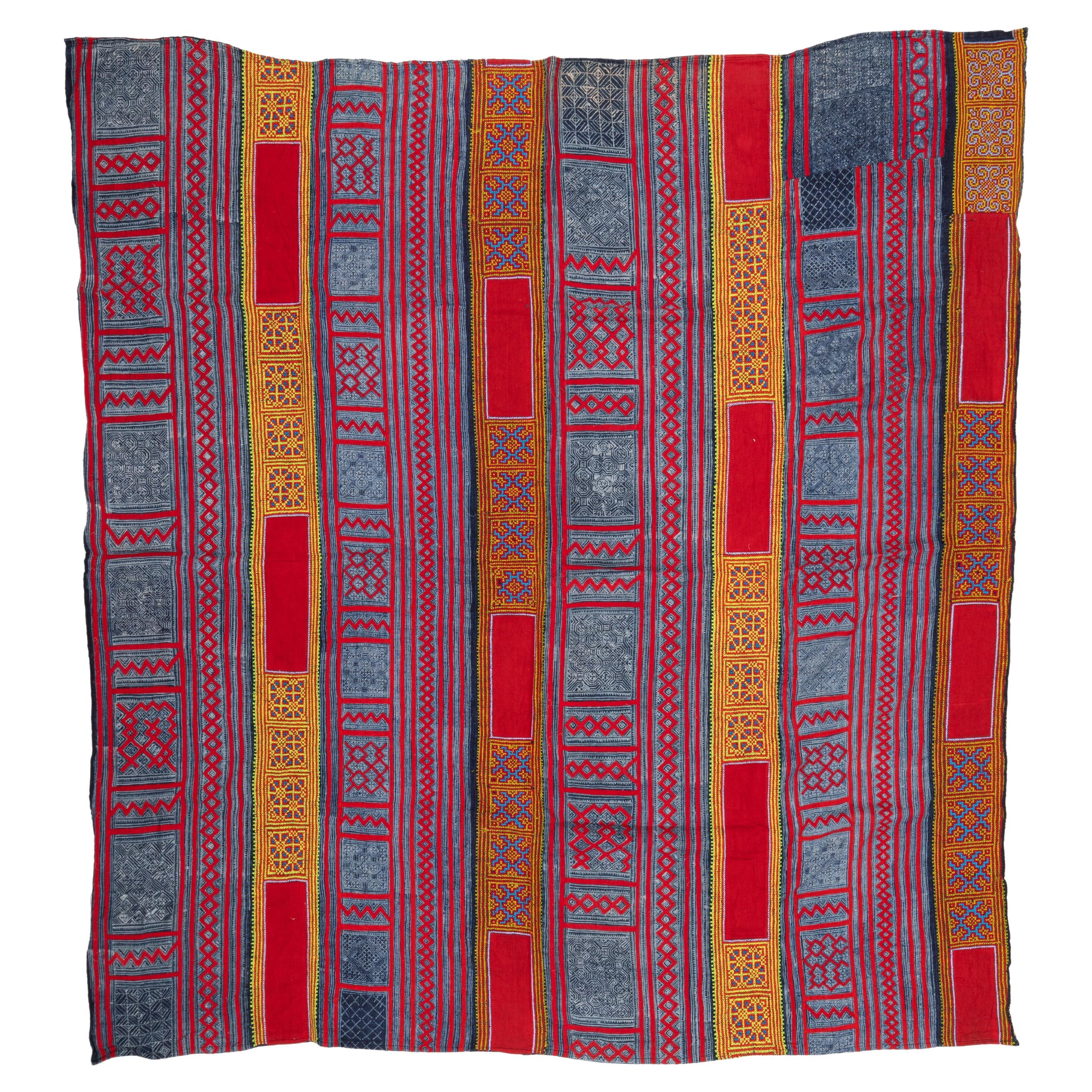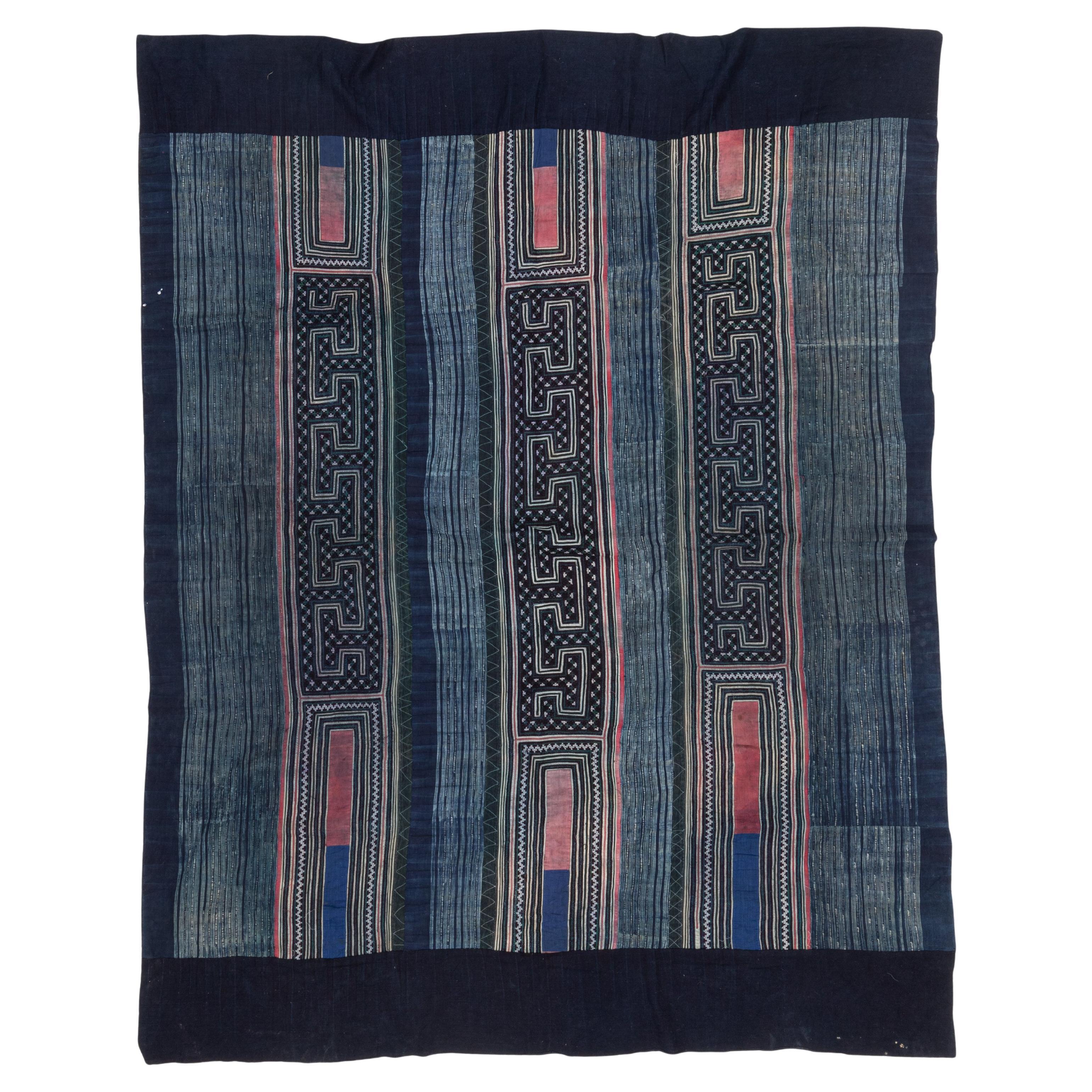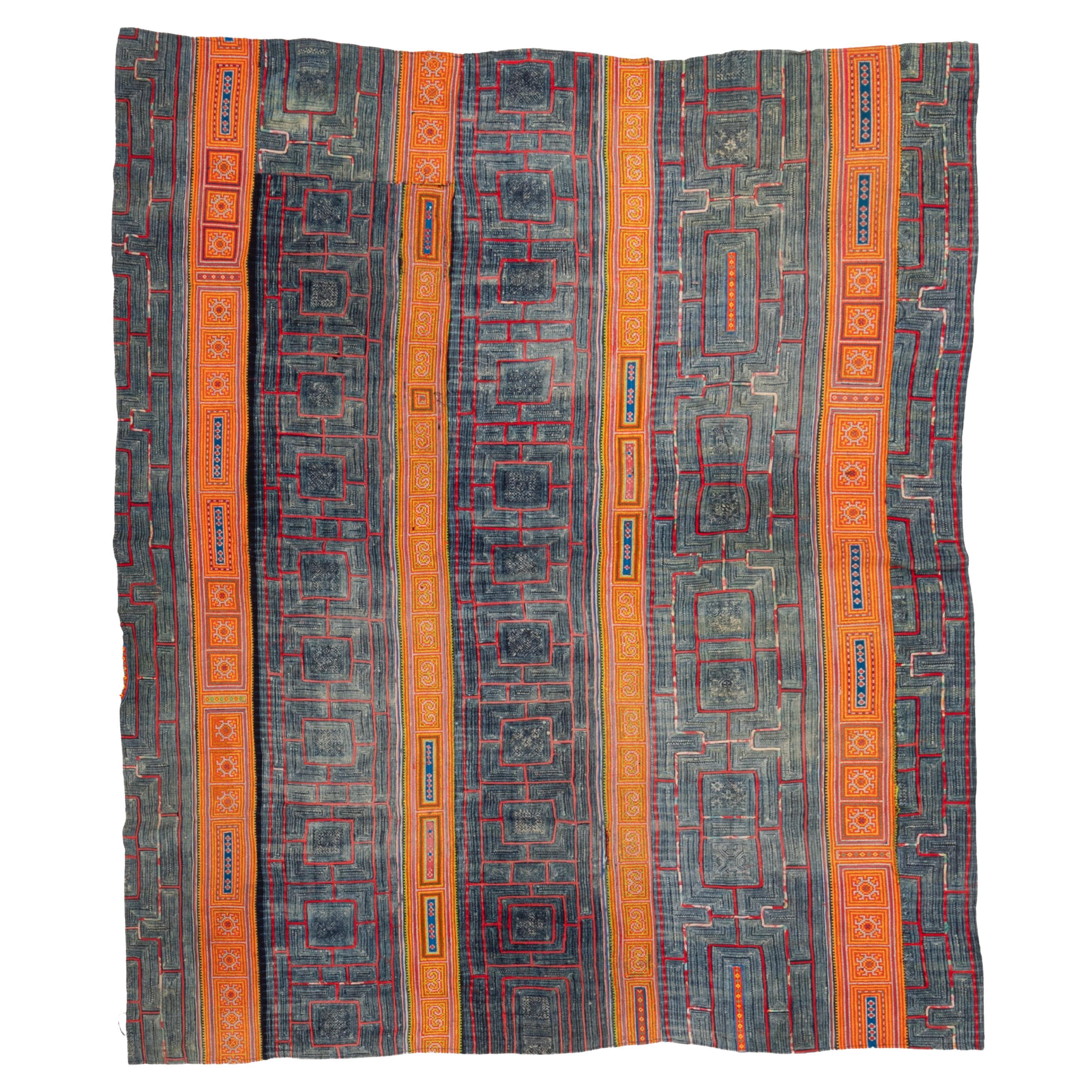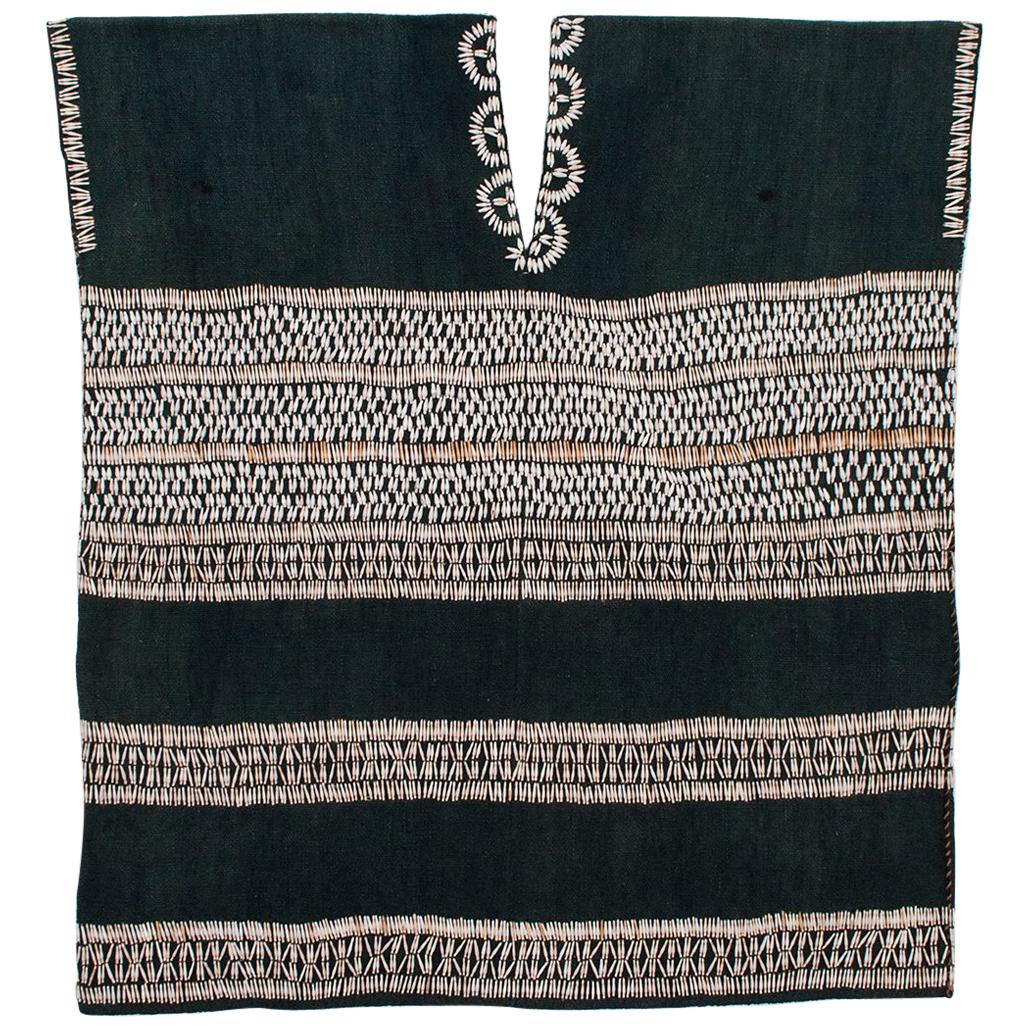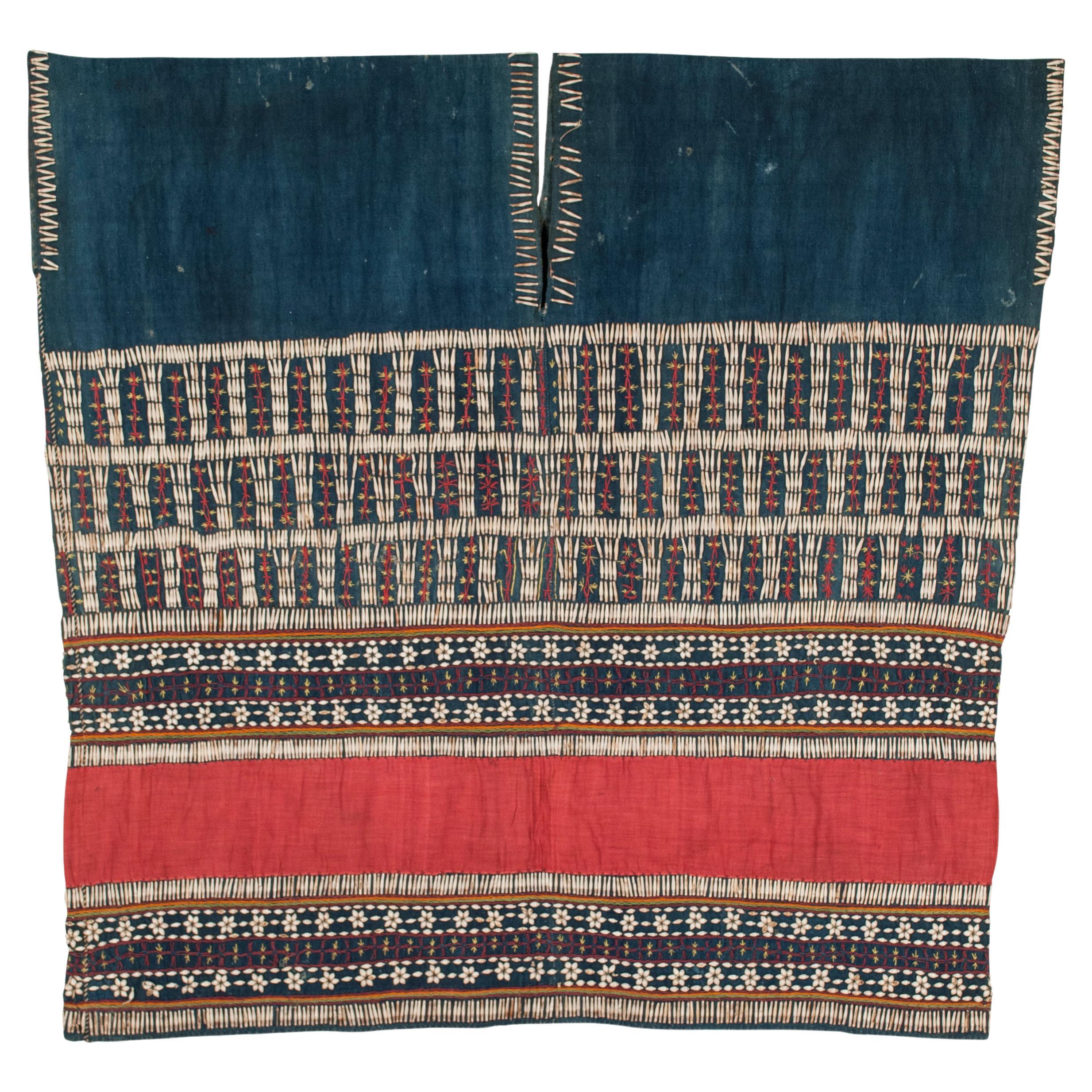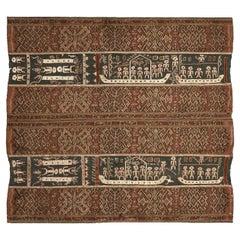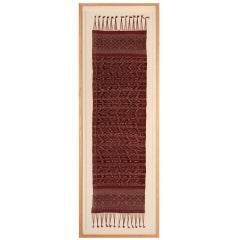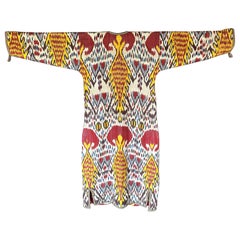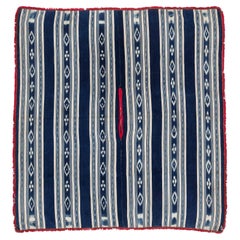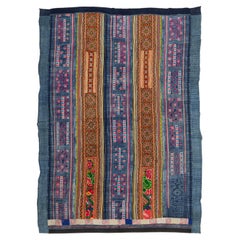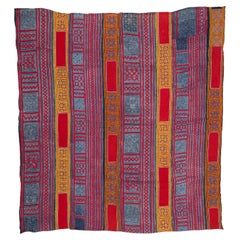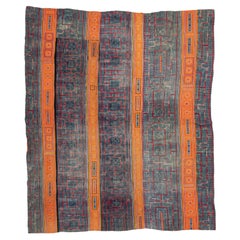Items Similar to Ceremonial Cape Textile Art from Hmong Miao People
Want more images or videos?
Request additional images or videos from the seller
1 of 13
Ceremonial Cape Textile Art from Hmong Miao People
$4,000
£3,026.97
€3,491.04
CA$5,585.72
A$6,257.81
CHF 3,257.19
MX$76,208.20
NOK 41,492.21
SEK 39,073.96
DKK 26,060.20
Shipping
Retrieving quote...The 1stDibs Promise:
Authenticity Guarantee,
Money-Back Guarantee,
24-Hour Cancellation
About the Item
An oversized and impressive cape worn during ceremonial dancing by Miao people (also known as Hmong in English) from Guizhou Province, China circa 1940s-1950s in a rarely intact and well-preserved condition. Miao people are diverse minority groups living in Southern China as well as Southeast Asia with complex sub-affiliations based on attires, languages, cultural customs and art tradition. They are renowned for their textile and silver craftsmanship as well as singing and dancing traditions. This cape, rather heavy in construction and striking in bold red and black, was made from wool, hemp and cotton. The surface showcases elongated diamond patterns in complementary woven wool and couched plaque on top of the cotton part. The pattern strikes the viewer with a strong sense of dignity and power. The heavy material and pattern are strangely akin to some of the Navajo weaving. The cape is in a form a jacket with long and wide sleeves, and it was meant to be used in ceremonial occasions.
Our research reveals that the piece was from the Northwest Guizhou in an autonomous county called Weining. The area is of subtropical highland and the generally cold weather was reflected in the heavy materials used in this piece, in comparison with other textiles made in the warmer lowland.
There is an older paper label with price tag in Chinese inside the cape. It was purchased in Guizhou decades ago by a US collection in MA. With a span of over 94 inches long, it makes a very impressive textile art piece for wall hanging. Not framed and easily shipping folded up.
For a similar jacket from Weining, see "Miao Textile from China" by Gina Corrigan; page 22-23.
- Dimensions:Height: 10 in (25.4 cm)Width: 25 in (63.5 cm)Depth: 25 in (63.5 cm)
- Style:Tribal (Of the Period)
- Materials and Techniques:
- Place of Origin:
- Period:
- Date of Manufacture:1940s-1950s
- Condition:Wear consistent with age and use. Fine condition for a field-collected textile, intact and well preserved, some loose threads from edge, some scattered stain spots.
- Seller Location:Atlanta, GA
- Reference Number:1stDibs: LU945022874062
About the Seller
4.9
Platinum Seller
Premium sellers with a 4.7+ rating and 24-hour response times
Established in 2006
1stDibs seller since 2010
564 sales on 1stDibs
Typical response time: <1 hour
- ShippingRetrieving quote...Shipping from: Atlanta, GA
- Return Policy
Authenticity Guarantee
In the unlikely event there’s an issue with an item’s authenticity, contact us within 1 year for a full refund. DetailsMoney-Back Guarantee
If your item is not as described, is damaged in transit, or does not arrive, contact us within 7 days for a full refund. Details24-Hour Cancellation
You have a 24-hour grace period in which to reconsider your purchase, with no questions asked.Vetted Professional Sellers
Our world-class sellers must adhere to strict standards for service and quality, maintaining the integrity of our listings.Price-Match Guarantee
If you find that a seller listed the same item for a lower price elsewhere, we’ll match it.Trusted Global Delivery
Our best-in-class carrier network provides specialized shipping options worldwide, including custom delivery.More From This Seller
View AllIkat and Embroidery Textile Panel from Sumatra Indonesia
Located in Atlanta, GA
An Indonesia textile panel professionally presented on a linen canvas. It can be taken off from the canvas for easy and economical shipping upon req...
Category
20th Century Indonesian Tribal Textiles
Materials
Cotton
Framed Antique Indonesian Ceremonial Ikat Shawl from Bali
Located in Atlanta, GA
A beautifully woven silk Ikat with fringes on both end, collected from Jingaraia Region on Bali island of Indonesia, circa early 20th century or earlier. The textile features red, si...
Category
Early 20th Century Indonesian Tribal Quilts and Blankets
Materials
Silk
Vintage Woven Ikat Chapan Robe Central Asia Uzbekistan
Located in Atlanta, GA
Chapan is the iconic fornt-open flowing robe traditionally worn by the nomadic people in Central Asia. In countries like Uzbekistan, it was almost the old national costume. This Uzbe...
Category
Mid-20th Century Uzbek Tribal Textiles
Materials
Cotton
Vintage Hand-woven Ikat Poncho from Central Ecuador
Located in Atlanta, GA
A Man's Special Occasion Poncho collected in Ambato, Tungurahua Province, Central Ecuador circa 1940-50s. The finely woven poncho was hand-sewn from two large matching panels, each w...
Category
Mid-20th Century Ecuadorean Pre-Columbian Tapestries
Materials
Cotton
Framed Pre-Columbian Woven Textile from Chancay Culture
Located in Atlanta, GA
An antique pre-Columbia textile panel from Chancay culture in Central coast of nowadays Peru. Chancay culture thrived in the late Intermediate period/ late Horizon circa AD. 1000-1470. The panel appears to be an intact shawl or head scarf, indicated by the overall integrity with the finished edges. It is a gauze-like linen/cotton open-square woven panel with supplemental embroidered horizontal bands that alternate between hooked diamond motifs and silhouettes of perched seabirds, one of the most favored animal forms in Chancay art. The color is quite vibrant with red contrasted by two shades of yellow on a darker brown background. The scarf such as this is thought to be associated with ceremonies and magic realm of death and burial practice. The textile is displayed on a dark line background under a newly made acrylic shadow box.
Reference: For reading on the bird motifs in Chancay textile art, see page 141-183 of the book "Ancient...
Category
Antique 15th Century and Earlier Peruvian Pre-Columbian Tapestries
Materials
Textile, Linen
Japanese Textile Panel Double Ikat Kasuri Futon Cover
Located in Atlanta, GA
A Japanese woven cotton textile panel with white pattern on indigo background circa 1900-20s (end of Meiji to Tasho period). The panel was joined by four vertical stripes and was tra...
Category
Early 20th Century Japanese Meiji Textiles
Materials
Cotton
You May Also Like
Hmong Batik and embroidery cover from South East Asia, mid 20th C.
Located in Istanbul, TR
Hmong textiles are incredibly rich in symbolism and craftsmanship, reflecting the unique culture, history, and traditions of the Hmong people. The Hmong are an ethnic group from the ...
Category
Mid-20th Century Vietnamese Tribal Pillows and Throws
Materials
Cotton
Hmong Batik and embroidery cover from South East Asia, mid 20th C.
Located in Istanbul, TR
Hmong textiles are incredibly rich in symbolism and craftsmanship, reflecting the unique culture, history, and traditions of the Hmong people. The Hmong are an ethnic group from the ...
Category
Mid-20th Century Vietnamese Tribal Pillows and Throws
Materials
Cotton
Hmong Batik and embroidery cover from South East Asia, mid 20th C.
Located in Istanbul, TR
Hmong textiles are incredibly rich in symbolism and craftsmanship, reflecting the unique culture, history, and traditions of the Hmong people. The Hmong are an ethnic group from the ...
Category
Mid-20th Century Vietnamese Tribal Pillows and Throws
Materials
Cotton
Hmong Batik and embroidery cover from South East Asia, mid 20th C.
Located in Istanbul, TR
Hmong textiles are incredibly rich in symbolism and craftsmanship, reflecting the unique culture, history, and traditions of the Hmong people. The Hmong are an ethnic group from the...
Category
Mid-20th Century Vietnamese Tribal Pillows and Throws
Materials
Cotton
Mid-20th Century Tribal Woman's Tunic, Karen People, Burma
Located in Point Richmond, CA
Mid-20th century tribal woman's tunic, Karen People, Burma
A nice, graphic example of a woman's blouse from the Karen ethnic group in Burma/Myanmar. Th...
Category
Mid-20th Century Burmese Tribal Tribal Art
Materials
Cotton
$1,360 Sale Price
20% Off
Early-Mid 20th Century Karen 'Sgaw', Women’s Ceremonial Tunic, Burma / Myanmar
Located in Point Richmond, CA
Early-mid 20th century Karen (Sgaw) women’s ceremonial tunic, Burma / Myanmar
Typically used in weddings and other formal occasions, woman’s tunics from the Sgaw Karen ethnic grou...
Category
Early 20th Century Burmese Tribal Textiles
Materials
Cotton
